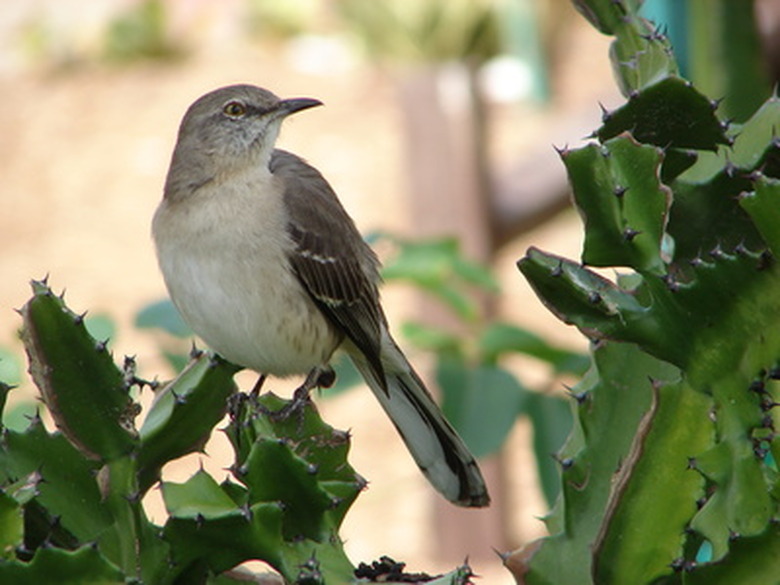How To Build A Bird House For A Mockingbird
Things Needed
- Cedar lumber
- Hammer
- Nails
- Saw
- Foliage
- Paint
The mockingbird derives its name from the ability to mimic many other bird species. A mockingbird can mimic as many as thirty different bird calls in a single sequence; making it a desirable bird in most gardens and yards because it brings so many bird songs to the area. Mockingbirds do not typically roost in man-made bird houses, but it is possible to create a house fit for a mockingbird by creating a more natural nesting environment.
Step 1
Create a pattern for your bird house, or purchase a pre-designed pattern. The bird house that you design should be large enough to accommodate a mockingbird family, but lacking the bells and whistles of a decorative bird house since you will be tailoring it to suit mockingbirds.
Step 2
Build the base of the mockingbird house. Cedar lumber is a good choice because it is a preferred tree by mockingbirds. Other suitable lumber choices for this project include dogwood and sumac. The mockingbird house should have square or rectangular sides with a sturdy floor.
Step 3
Add the roof to the mockingbird house. This can be a pitched roof or a flat roof. The type of roof that you use does not matter, as long as it is sturdy and provides shelter for the birds that live inside. Make sure that the roof connects sturdily to the base of the birdhouse.
Step 4
Cut a hole in the front of the mockingbird house. Make sure that you size the hole big enough to accommodate a mockingbird, which is generally around 10 inches long.
Step 5
Paint the finished house in a natural color, such as the color of the trees in your landscape. Mockingbirds do not tend to use man-made bird houses unless they resemble part of the landscape.
Step 6
Cover the house with dried or silk leaves and other faux foliage. The goal here is to make the bird house look like part of the backdrop without it blending in completely.
Step 7
Situate the mockingbird house in an area where there is plenty of natural foliage, such as up in a tree rather than hanging from a branch. Surround the house with plants that mockingbirds enjoy such as blackberries, hollies, wild grapes, elderberries and hackberries. They also tend to prefer dogwood, red cedar and sumac trees.
References
- "Birdhouses and How to Attract Specific Species of Birds;" Society of Landscaping and Yard Work Professionals; 2007
